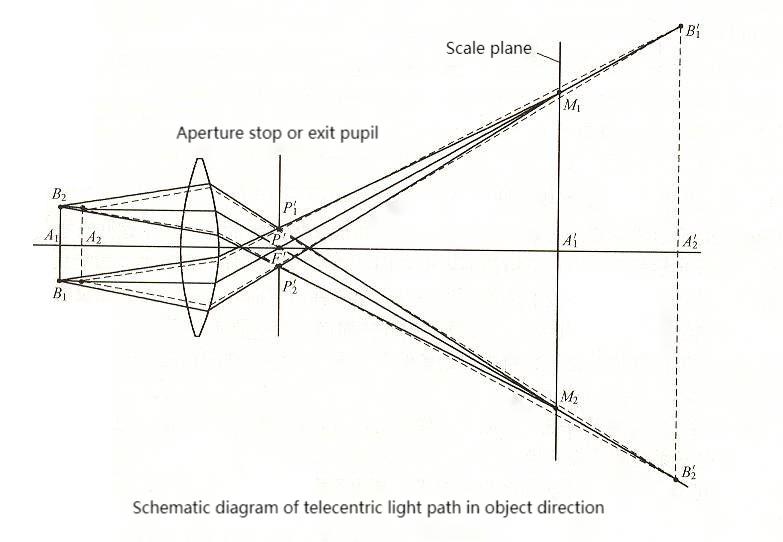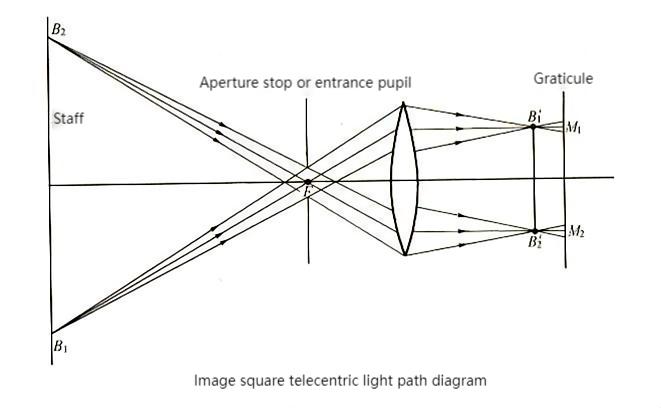This product was successfully added to cart!
Cheap price CS Mount Fisheye Lens - Telecentric Lenses – ChuangAn
| Model | Sensor Format | Focal Length(mm) | FOV (H*V*D) | TTL(mm) | IR Filter | Aperture | Mount | Unit Price | |
|---|---|---|---|---|---|---|---|---|---|
Cheap price CS Mount Fisheye Lens - Telecentric Lenses – ChuangAn Detail:
The telecentric lens is mainly designed to correct the parallax of the traditional industrial lens, and it can be in a certain distance range, so that the obtained image magnification will not change, which is a very important application for the case that the measured object is not on the same surface.
Through a special lens design, its focal length is relatively long, and the physical length of the lens is usually smaller than the focal length.
Characteristics of telecentric lenses
Its characteristic is that it can make distant objects appear larger than their actual size, so distant scenery or objects can be photographed clearer and more detailed.
Telecentric lenses bring a qualitative leap to machine vision precision inspection based on their unique optical characteristics: high resolution, ultra-wide depth of field, ultra-low distortion, and unique parallel light design.
Telecentric lenses are widely used in scenes such as sports events, wildlife and nature photography, and astronomical observations, because these scenes often require shooting or observing objects from a long distance. Telecentric lenses can bring distant objects “closer” while maintaining the clarity and detail of the picture.
In addition, due to the long focal length of telecentric lenses, they can achieve background blur and shallow depth of field, making the subject more prominent when shooting, so they are also widely used in portrait photography.
Basic classification of telecentric lenses
Telecentric lenses are mainly divided into object-side telecentric lenses, image-side telecentric lenses and side-side telecentric lenses.
Object lens
Object telocentric lens is the aperture stop placed on the image square focal plane of the optical system, when the aperture stop is placed on the image square focal plane, even if the object distance changes, the image distance also changes, but the image height does not change, that is, the measured object size does not change.
Object square telecentric lens is used for industrial precision measurement, the distortion is very small, and the high performance can achieve no distortion.
Schematic diagram of telecentric light path in object direction
Image square lens
The image-side telecentric lens places the aperture diaphragm on the object-side focal plane so that the image-side principal ray is parallel to the optical axis. Therefore, although the installation position of the CCD chip changes, the size of the projected image on the CCD chip remains unchanged.
Image square telecentric light path diagram
Bilateral lens
The bilateral telecentric lens combines the advantages of the above two telecentric lenses. In industrial image processing, generally only object telecentric lenses are used. Occasionally, telecentric lenses on both sides are used (of course the price is higher).
In the field of industrial image processing/machine vision, telecentric lenses generally do not work, so this industry basically does not use them.
Product detail pictures:



Related Product Guide:
Gaining client pleasure is our company's aim without end. We are going to make excellent efforts to create new and high quality goods, meet your special requirements and provide you with pre-sale, on-sale and after-sale companies for Cheap price CS Mount Fisheye Lens - Telecentric Lenses – ChuangAn , The product will supply to all over the world, such as: Detroit, Swaziland, Cyprus, As a way to use the resource on the expanding info in international trade, we welcome prospects from everywhere on the web and offline. In spite on the high quality items we offer, effective and satisfying consultation service is supplied by our qualified after-sale service group. Item lists and detailed parameters and any other info weil be sent to you timely for the inquiries. So please make contact with us by sending us emails or call us when you've got any questions about our organization. ou could also get our address information from our site and come to our enterprise. We get a field survey of our merchandise. We are confident that we'll share mutual accomplishment and create solid co-operation relations with our companions within this market place. We're seeking forward for your inquiries.
A nice supplier in this industry, after a detail and careful discussion, we reached a consensus agreement. Hope that we cooperate smoothly.
Products categories
-

Skype
-

Whatsapp
-

Top

 Products
Products







